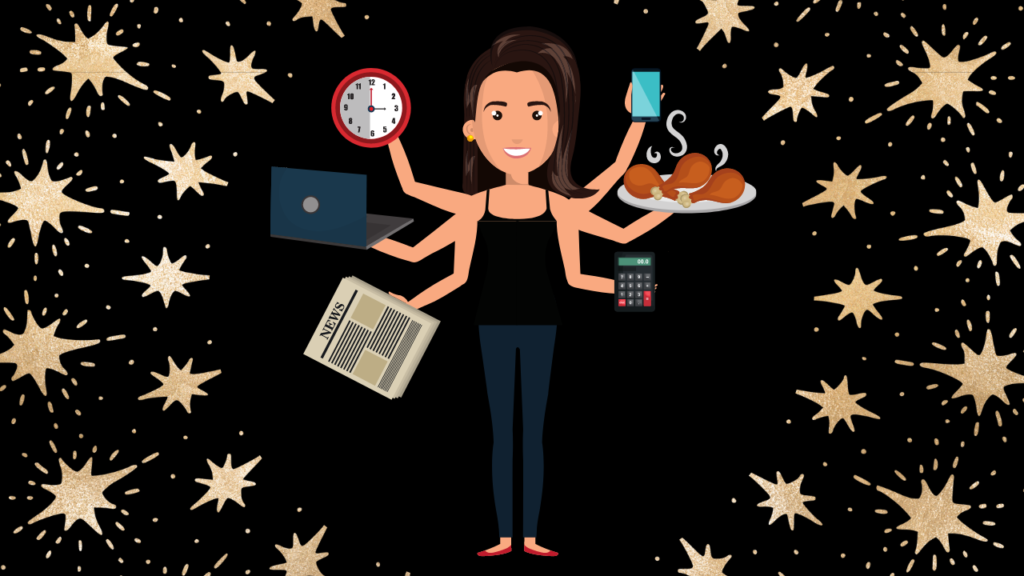
Pros and Cons of Multitasking — 5 Great Productivity Tips

Introduction: How Multitasking Works
Multitasking is a technique where a person does two or more tasks at the same time. For example, if someone is talking on the phone and making a cup of tea – they are engaged in multitasking.
Why do people multitask?
The answer to this question is that it’s human nature. We have been trying to do more than one thing at once for centuries. We all know that multitasking can be done in both good and bad ways so, let’s explore some ways to do it better.
Multitasking — Good and Bad
Multitasking is nothing more than the act of simultaneously doing two or more tasks at the same time. It can be a problem, but it can also be beneficial.
Many people feel like they cannot focus on a task and need to do something else while they are performing a task. This is one of the reasons why many people are against multitasking.
But, there are plenty of tasks out there that can benefit from multitasking. This post will discuss both sides so you can decide whether or not you agree with the topic’s statement.
How to Multitask Less – 5 Productivity Tips
Plan and Schedule Your Day
Every morning, spend 10-15 minutes planning your day. This way you will be able to set goals and focus on the most important tasks.
This is one of the key skills that you can develop in order to optimize your productivity while multitasking.
The best way to do this is by creating a plan for the day and following it religiously. This will help you avoid getting distracted by unimportant tasks and allow you to focus only on what actually matters.
Focus on the Task at Hand
It is not easy to multitask and in most cases, we end up doing a lot of things in a half-baked manner. So rather than trying to multitask, we should take one task at a time and focus on it.
Don’t Overcommit Yourself and Learn How to Say “No”
Say “no” to people who interrupt you when they know that it’s not a good time for you. Set clear boundaries when working with others – make sure you are not overcommitting yourself.
Pomodoro Technique
The Pomodoro Technique is a time management method developed in the late 1980s by Francesco Cirillo after the tomato-shaped timer (in Italian “pomodoro”) that he used as a university student to study without distractions for long periods of time.
It is a simple technique that can help you stay on track with your work.
The Pomodoro Technique requires the following 4 steps:
1) Decide what task you are going to focus on during this 25-minute period of time.
2) Set your timer to 25 minutes.
3) Work on your task until the timer goes off, then put an “X” next to that task.
4) Take a short 5-minute break.
Practice Mindfulness and Doodling
Practice mindfulness: Keep a gratitude journal, meditate, take time for some deep breathing exercises.
Doodle for 15 minutes to let your attention turn inwards and give it some rest.
And don’t forget to get more sleep during the night before.
Team Help
Sometimes people multitask all alone because they cannot establish good social contact with other coworkers or teams.
Understand what motivates you—and write it down on a notecard for easy reference.
Get to know the people you work with – make social connections in the office. Ask for help when necessary.
Let’s now turn our attention to the dark side of multitasking.

Why Multitasking is Bad & How It Affects Your Productivity
It’s true that we live in a world where we’re expected to be constantly available and responsive, but we also need to take care of ourselves and set boundaries. With so many distractions around us, it can be easy to resort to multitasking, but this isn’t doing your productivity any favors.
Multitasking cuts our attention span in half because the brain is unable to focus on two tasks simultaneously. It also makes you more prone to making mistakes and errors by dividing your attention and weakening your memory.
Finally, it cripples your creativity by scattering your thoughts and making it harder for ideas to flow freely through your mind.
University of Michigan Multitasking Study
For all you work-from-home professionals, here are some multitasking tips from David Meyer, a professor of cognition and perception at the University of Michigan (brought to you by WIRED magazine):
1) Double up on tasks that use different mental channels like writing a report and brainstorming for a company logo.
2) Think carefully about the requirements of each task. If you are trying to close the sales while driving a car and the conversation does not go as planned you might be endangering both your life and the lives of innocent others.
3) Minimize unnecessary distractions by switching off your phone ringer, shutting down your email, and closing the door (if you have one).
4) Interrupt tasks at natural breaking points. Finish writing a sentence before answering a phone.
5) Set aside time for not doing anything at all. Take breaks, eat well, exercise and make sure you get enough sleep.
Conclusion
Multitasking, the act of doing two or more tasks at one time, has its positives but negatives as well. While it increases productivity, the quality of the job done may suffer due to a shorter attention span to each individual task that multitasking allows. Multitasking has been shown to reduce productivity by as much as 40%.
In order for you to improve the quality of your work, you need to stop multitasking. This will allow you to focus on a single task and make it go faster. But that requires time. So in situations where you are forced to complete more than one task at a time, follow the multitasking suggestions provided above in this post.
